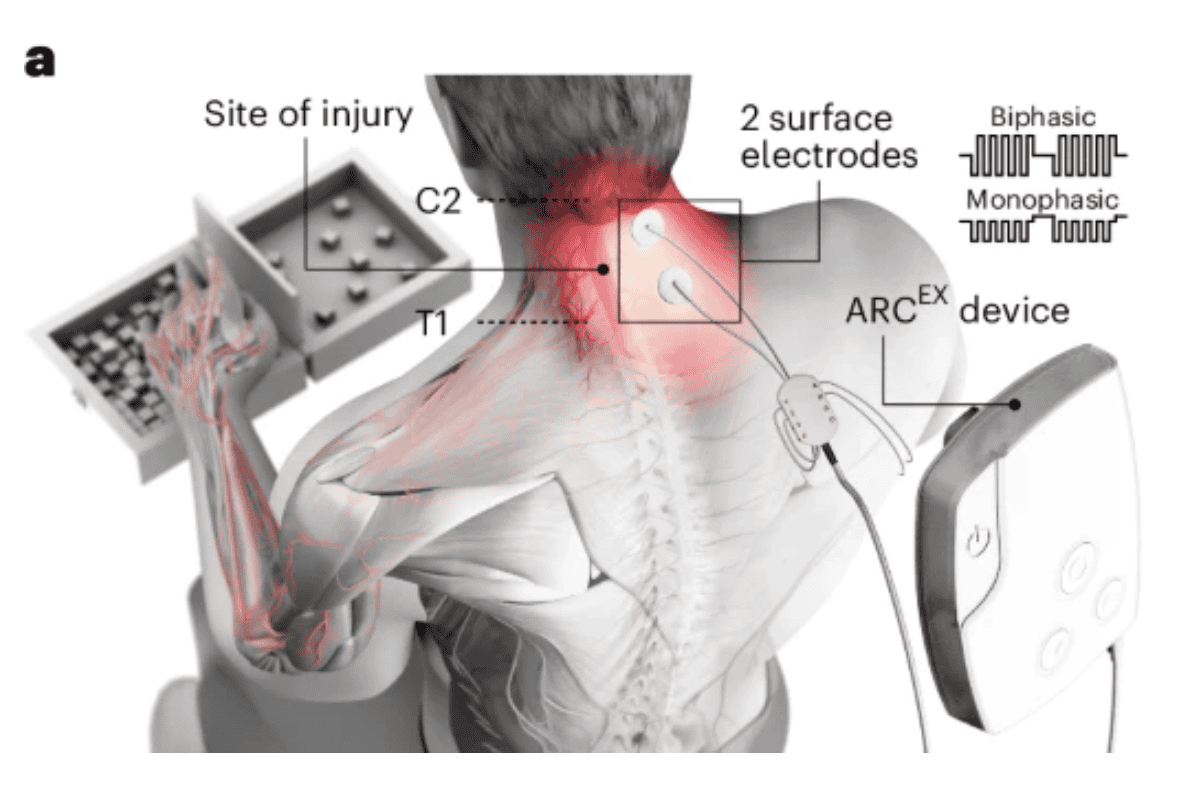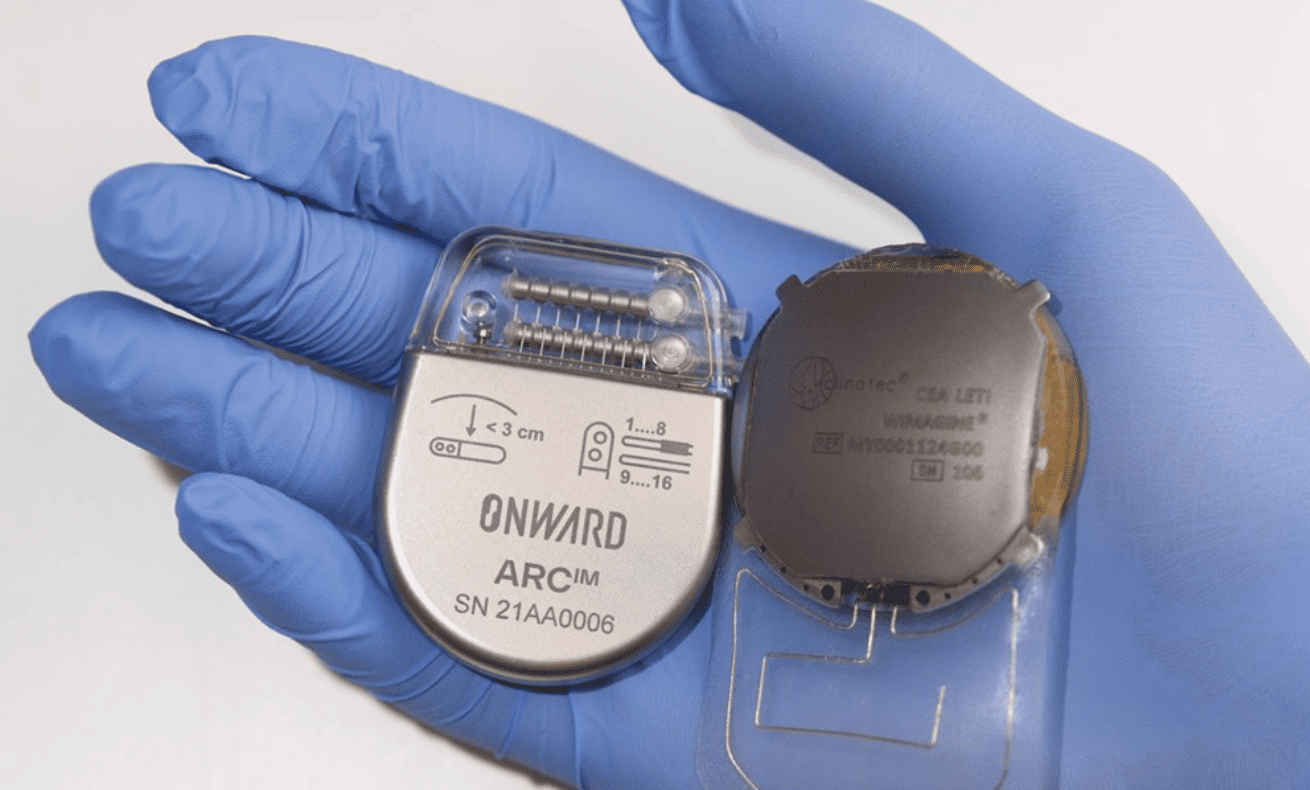
A new therapy by ONWARD Medical, which uses electrical stimulation, shows promising results in improving hand and arm function in people with incomplete spinal cord injury. In a study with 60 participants, 72% showed significant improvements in strength and functionality without serious side effects. This therapy offers hope for many who struggle daily with the effects of spinal cord injury and have chronic tetraplegia. Due to the non-invasive nature of the treatment and its impressive results, Arc-Ex can significantly improve patients’ quality of life.
The study was conducted at 14 sites in the United States, Canada, the United Kingdom and the Netherlands. The study was made possible by ONWARD Medical, which directed the study, provided the Arc-Ex devices and provided field support to the researchers. ONWARD is based in Eindhoven and Lausanne and is a former winner of the Gerard & Anton Award. Nature Medical published about the study this week.

The patients performed exercises for two months to train the function of their arms and hands, while at the same time using electrodes to deliver an electrical stimulus to the back of their necks. As a result, over time they had less difficulty lifting a filled cup, lifting a fork or turning a key.
What is Arc-Ex Therapy?
Arc-Ex Therapy is an innovative treatment method that uses non-invasive electrical stimulation over the cervical spinal cord. During structured rehabilitation sessions, electrical stimulation is delivered externally through surface electrodes. This helps modulate neuronal activity, leading to improved functions of arms and hands in patients with chronic tetraplegia.
The results of the study were impressive. As many as 72% of the participants showed significant improvements in both strength and functionality of their hands and arms. In addition to these primary results, secondary improvements such as increased fingertip pinch strength, improved handgrip, and upper extremity motor and sensory skills were also observed. In addition, participants reported increased quality of life.
No serious side effects
One of the most encouraging findings of the study was that no serious side effects related to Arc-Ex Therapy were reported. Although 238 side effects were reported, only 44 of these were related to the therapy and were classified as non-serious. This emphasizes the safety of the treatment for long-term use.
The impact of even small improvements in hand functions can be enormous for people with tetraplegia. Improved hand and arm functions can lead to greater independence in daily activities such as typing, cooking and personal care. The non-invasive nature of Arc-Ex Therapy makes it an attractive option for patients who are reluctant to undergo surgery.
The future
The researchers behind Arc-Ex Therapy are optimistic about the future. Efforts are underway to obtain regulatory approval in the United States and Europe. In addition, plans are being made for further studies of implanted neurostimulators that could potentially provide even more effective and targeted stimulation. The hope is that Arc-Ex Therapy will provide benefits not only for people with spinal cord injuries, but also for other neurological conditions.

